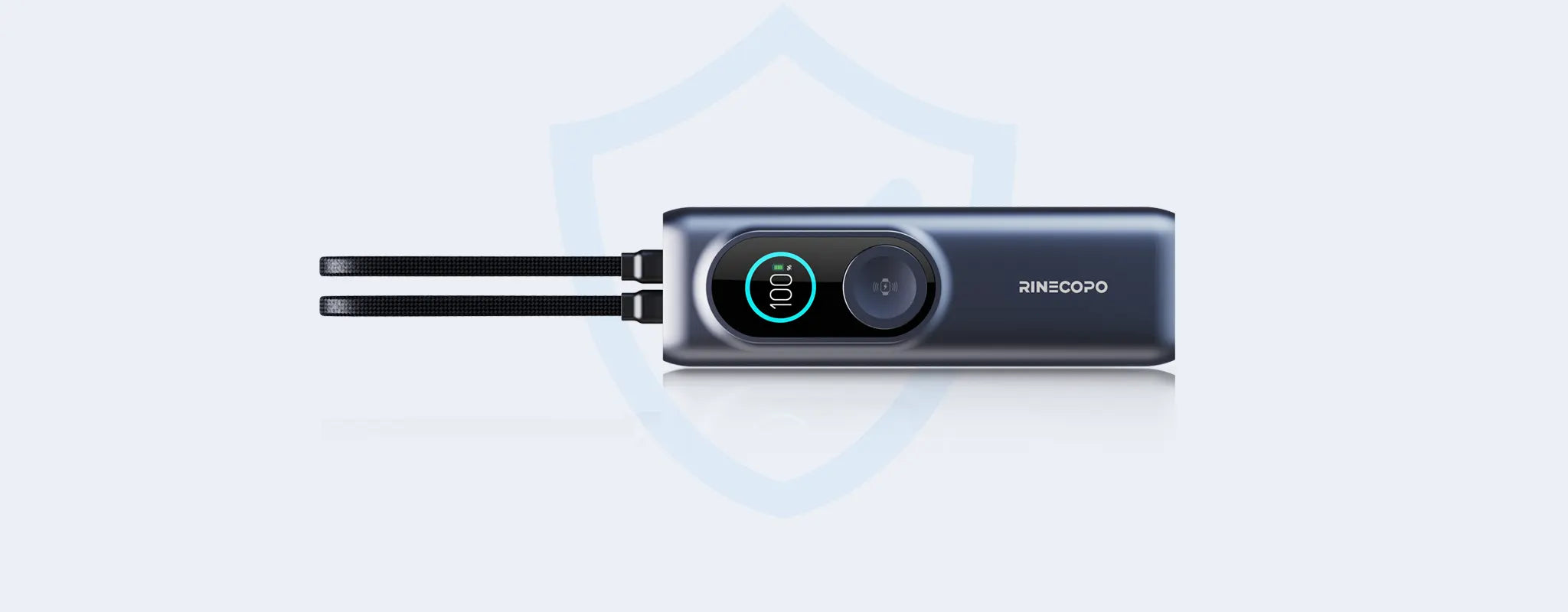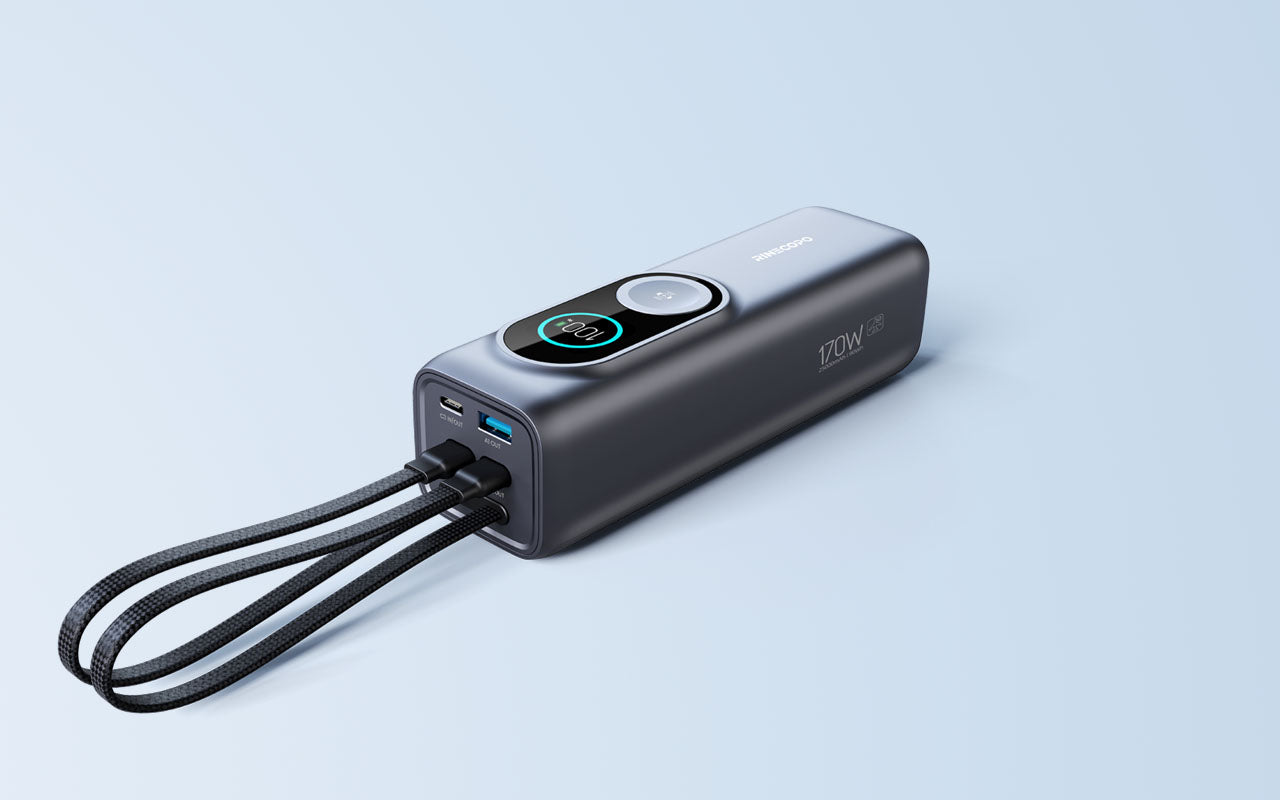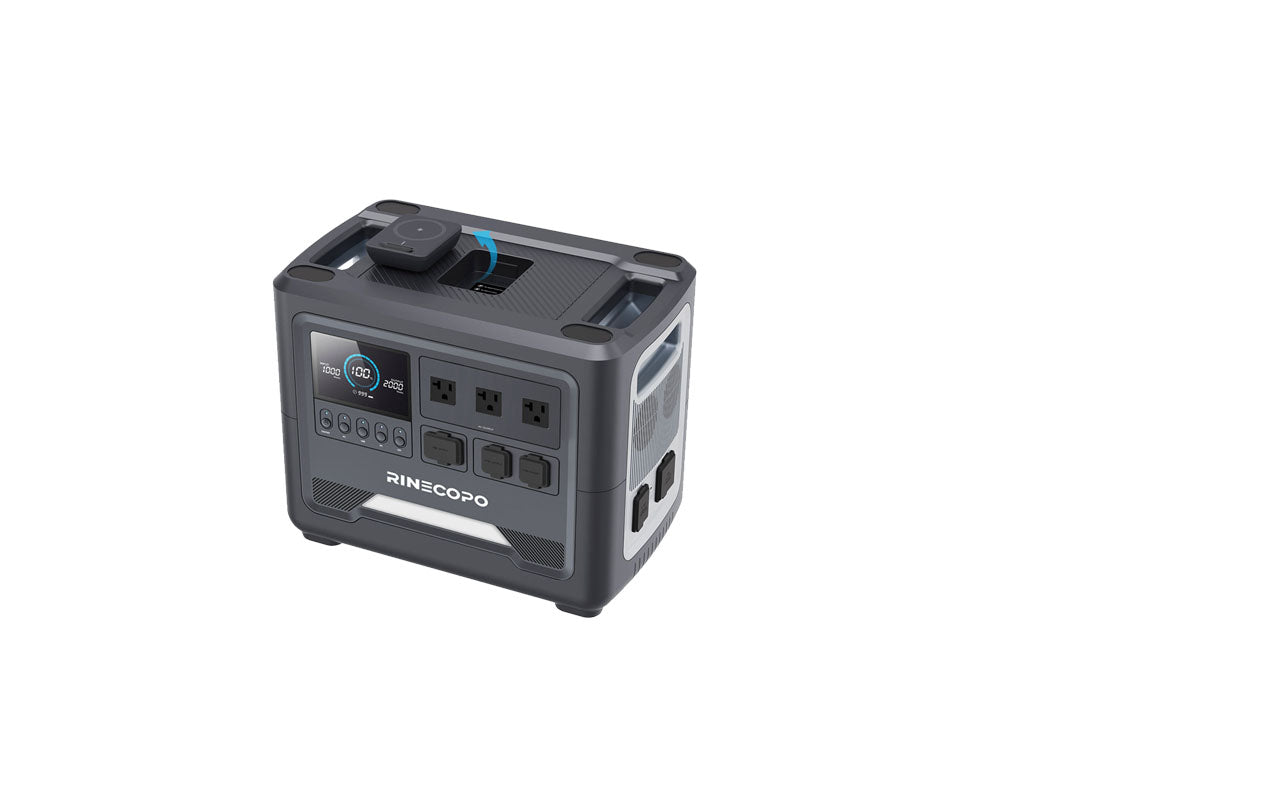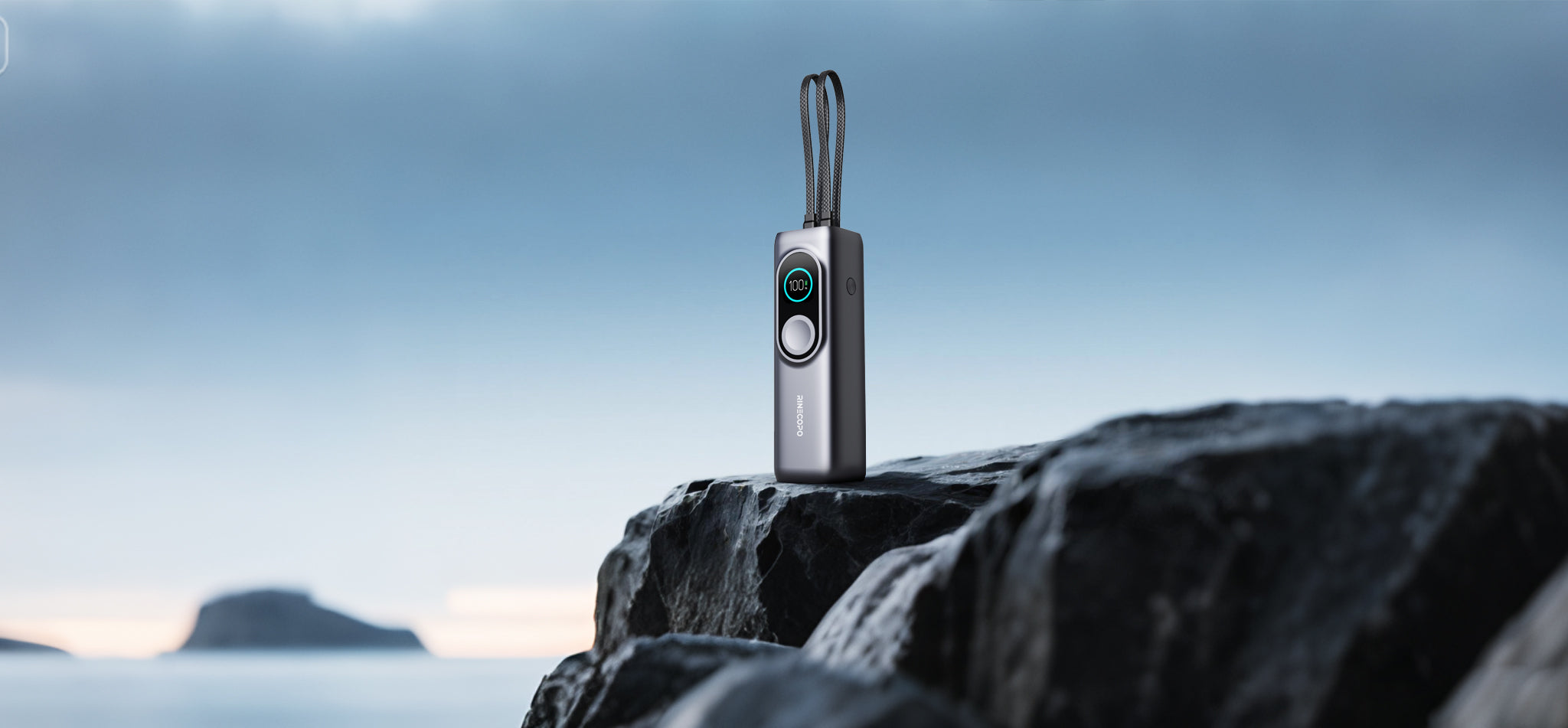
📅 Updated: June 14, 2025
Picture this: You're at the airport, your phone’s at 5% battery, and you’re staring at two power banks —
one says 20,000 mAh, the other says 74 Wh.
Which one will charge your phone more times?
If you’re not sure, you’re not alone.
Specs like mAh (milliamp-hours) and Wh (watt-hours) can be confusing — but understanding them is key to picking the right power bank for your needs. In this guide, we’ll break it all down using examples from RINECOPO power banks.
mAh vs. Wh: What’s the Difference?
-
mAh (milliamp-hours) measures how much charge the battery can store.
-
Wh (watt-hours) tells you how much usable energy the battery can actually deliver.
🔋 Think of it this way:
-
mAh is like how much water is in a tank
-
Wh is how much work that water can do — based on both the amount and the pressure (voltage)
🧠 Quick Conversion Formula:
Wh = (mAh × Voltage) / 1000
Most lithium-ion power banks — including RINECOPO — operate at 3.7V.
Example: See the Energy Difference
| Capacity (mAh) | Voltage (V) | Energy (Wh) |
|---|---|---|
| 5,000 | 3.7 | 18.5 |
| 10,000 | 3.7 | 37 |
| 20,000 | 3.7 | 74 |
⚠️ Some 8,000 mAh power banks use 5V and deliver 40 Wh — even though the mAh number looks smaller.
Bottom line: mAh can be misleading — Wh gives the real picture.
Why Wh Matters More Than mAh
Many people think, “Higher mAh = better battery.”
Not always true.
Example:
-
Power Bank A: 10,000 mAh @ 3.7V = 37 Wh
-
Power Bank B: 8,000 mAh @ 5V = 40 Wh
📌 B gives you more energy, even though it has a lower mAh rating.
👉 That’s why RINECOPO always lists both mAh and Wh, so you know exactly what you're getting.
✈️ Traveling with Power Banks: Know the Wh Limit
Airline rules matter — especially for carry-on batteries.
According to TSA and FAA:
-
Carry-on limit is 100 Wh per battery
-
100–160 Wh requires airline approval
-
Over 160 Wh = not allowed onboard
RINECOPO’s travel-friendly models, like the 25,000mAh version, typically operate at 90 Wh — well under the limit and safe for flights.
🔄 Visual Guide: The Water Tank Analogy
-
mAh = Tank size
-
Voltage = Water pressure
-
Wh = How much work the water can do
📌 A big tank (high mAh) with low pressure (voltage) might do less work than a smaller tank with high pressure.
That’s why you need to look at Wh, not just mAh.
🛡️ RINECOPO = Safety + Compliance
When choosing a power bank, safety certifications are just as important as capacity:
| Certification | What it Means |
|---|---|
| UL | US safety-tested and fire risk evaluated |
| CE | Complies with European Union safety standards |
| FCC / RoHS | Electronics tested for emissions & environmental safety |
✅ RINECOPO power banks are fully certified, giving you peace of mind whether you’re traveling or charging overnight.
🔢 What if Wh Isn’t Listed?
If a power bank only shows mAh, you can calculate Wh manually:
Example:
10,000 mAh × 3.7V ÷ 1000 = 37 Wh
20,000 mAh × 3.7V ÷ 1000 = 74 Wh
🎯 Most RINECOPO models clearly label both — no need to guess.
✅ Final Takeaways
-
Don’t rely only on mAh — Wh tells the real story
-
Make sure your power bank is under 100 Wh if you plan to fly
-
Use the formula:
Wh = (mAh × V) ÷ 1000 -
Choose certified brands like RINECOPO for safe, reliable charging
If you're looking for a power bank that's travel-approved, fast-charging, and built to last,
RINECOPO has you covered.
Recent Posts
Blog Tags
Power Banks: Your Pocket-Sized Energy Hub That Keeps the World Connected
At its core, a power bank is a portable electronic device that integrates a rechargeable energy cell (typically lithium-ion or lithium-polymer), charging circuitry, and input/output ports.
Its primary role is simple: to store electricity and provide power to your devices when you’re away from a wall outlet.
Best Power Bank Buying Guide: How to Choose the Right Portable Charger for Every Need
The capacity and portability of a power bank are always in direct conflict. More power inevitably means more weight and bulk. When choosing the right one, it all comes down to your actual usage scenarios:
Best Power Bank for iPhone 17: RINECOPO 25,000mAh 170W Portable Charger
That’s where the RINECOPO 25,000mAh 170W power bank steps in — the ultimate power bank for iPhone 17 and other high-performance devices.





